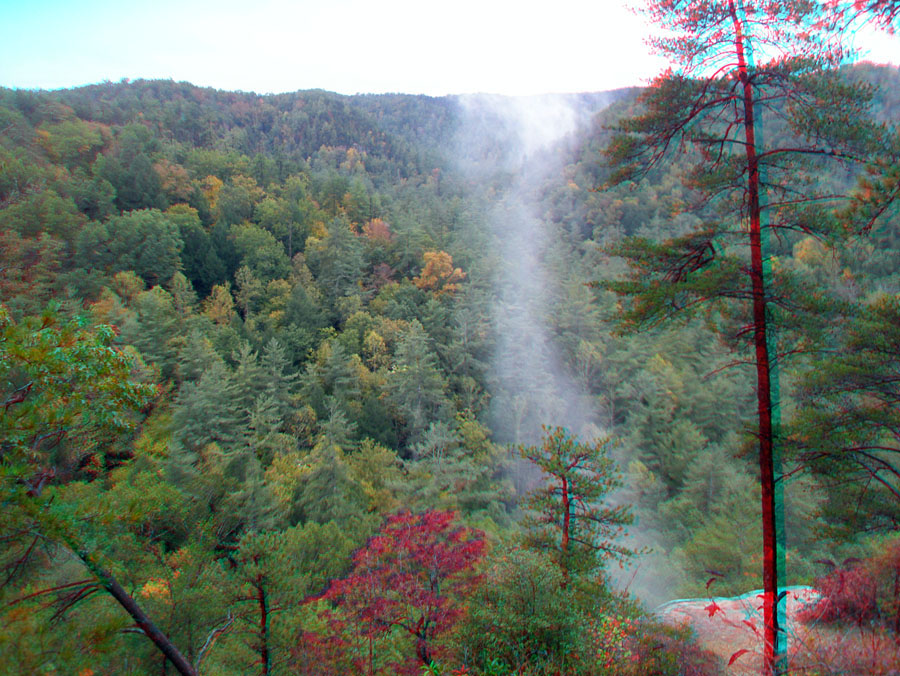
 |
| Plumes of mist rise from the forested valley of Red River Gorge. Red River Gorge has one of the most diverse flora populations in North America. The gorge offers refuge to both colder climate plants (left over from the end of the Ice Ages of the Pleistocene Epoch that ended around 11,000 years ago). These species live on north-facing ravines and slopes in cooler canyon areas. Red River Gorge is south of the boundary of the last continental ice sheet that extend partly into what is now northern Kentucky. South of the ice front large lakes may have extended far south into Kentucky as rivers were blocked by expanding ice sheets. South-facing slopes harbor warm climate species common in southern forests. The complex topography creates many microenvironments—ranging from river bottomland mixed-evergreen forests to barren, desert-tundra-like conditions on slick rock along the ridge lines. In addition, windy, dryer conditions prevail on the ridges compared to the more humid, forested, valley bottomlands along the Red River nearly 500 feet below in most areas. Although the area has been extensively lumbered in the past, the rugged landscape, cliffs, and isolation helped prevent destruction of many old trees. A threat to dam and flood the Red River Gorge in the 1970s faced overwhelming opposition and ultimately led to organized efforts to clean up and restore the natural status of the Red River Gorge Geologic Area within Daniel Boone National Forest (RRS, 2008). |